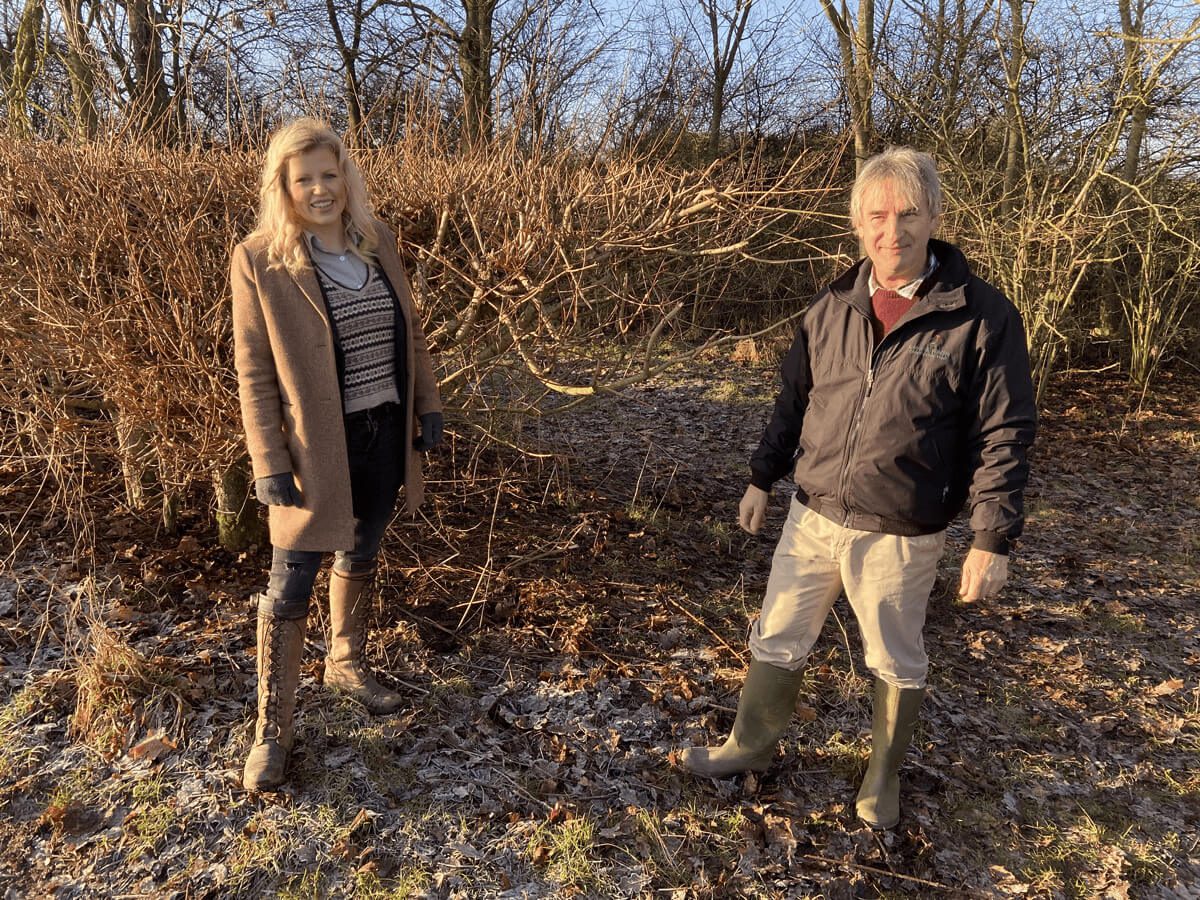- Allerton’s Joe Stanley scans the sky
- Prime birding habitat!
- Allerton’s ecologist John Sczur & local farmer Saya Harvey
The GWCT Big Farmland Bird Count has been running annually since 2014. The count is organised by the Game & Wildlife Conservation Trust (GWCT) to encourage land managers to support farmland birds and to highlight the hard work already done by many farmers and gamekeepers to help reverse species’ declines. The count also gives a vital national snapshot of the health of the UK’s farmland birds.
The count is sponsored by the National Farmers’ Union (NFU) and supported by numerous other countryside organisations across all 4 nations of the UK. Last year’s count was record-breaking: 2021 saw the number of counts submitted leap from 1,500 to 2,500, with participants counting across a massive 2.5million acres of England, Scotland, Wales and Northern Ireland, up from 1.4million acres in 2020.
And now we are challenging the UK’s land managers to beat their own record and make 2022’s count bigger than ever.
Counting takes just 30 minutes and gives farmers and land managers an opportunity to see the impact of our conservation work, encouraging us to continue or increase our efforts. It is also a chance to discover the different range of birds that are on our farms. By signing up at Big Farmland Bird Count – Game & Wildlife Conservation Trust (bfbc.org.uk) you will have access to lots of useful information on how to support farmland birds. And your results help give GWCT scientists a crucial insight into which bird species are thriving and which are struggling.
2022 is my first BFBC at the Allerton Project, the home of the initiative, and I was lucky to be able to undertake it under the expert guidance of John Sczur, our resident ecologist. Over the last thirty years, one of our primary aims at the Project has been to reverse the downward national trend of our farmland bird species, and in this we have been hugely successful through the provision of targeted habitat, supplementary feeding and predator control. As a result, we are delighted to see populations of rare amber listed species such as Song Thrush, Dunnock, Bull Finch and Reed Bunting increasing between five and ten times faster than in the region as a whole.
In the (exactly!) thirty minutes allowed by the count, I was delighted to watch John record 26 species of farmland birds across only a few of our 300 hectares on a bright and crisp February morning. Although the most ubiquitous species (as it feasted on oil oilseed rape crop) was the wood pigeon, I was thrilled that our next most populous was the red-listed and stunning Yellowhammer, with other elusive species such as the Marsh Tit, Skylark and Red Poll also putting in an appearance.
I can honestly say that this short period of time spent really concentrating on our farmland bird species (rather than simply noticing them in the background as I went about other work) was both hugely enjoyable and educational, and left me with a much better appreciation of the life on the farm and the habitats they enjoy.
The GWCT Big Farmland Bird Count runs from 4-20 February 2022.
The Allerton Project welcomes groups of farmers and land managers to demonstrate how wildlife can be helped to thrive in a working, farmed landscape.
By Joe Stanley, Head of Training & Partnerships





